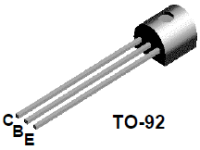These are the most useful (to us) pieces of info in a bipolar transistor datasheet:
Absolute Maximum Ratings - don't exceed any of these, not even for a millisecond. If you stay under 75% on all of them, your transistors will outlive you.
ICBO - collector cutoff current, AKA leakage current. A big deal with germanium transistors because most of them are pretty damned leaky. Pedal designers exploit this phenomenon. Some pedals, like Tone Bender, require a certain amount of leakage to work properly. With the small-signal silicon transistors we use in guitar pedals, ICBO is so low that it might as well be zero.
HFE & Hfe - current gain is important with germanium transistors because their gain can be pretty low. Usually doesn't matter much with silicon transistors because the ones we use have gains well in excess of 100, even at the low currents in guitar pedals. Fuzz-Face circuits are sensitive to HFE and ICBO, which is why a lot of them have bias trimmers and/or require transistors that are hand selected.
NF - noise figure tells us how much noise the transistor adds. Lower is better. Only the low-noise transistors advertise their noise figure. The others are too embarrassed.
Packaging information - pay attention to the pinout.
All that other stuff in the datasheet can be ignored for guitar pedals. This includes power dissipation and thermal characteristics because in 90% of pedals, the transistor dissipation is a less than 10mW.

